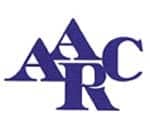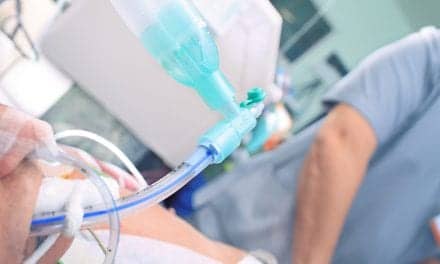For the first time, the ATS and ERS have collaborated on revising guidelines for PFT. We look at some highlights.

The American Thoracic Society (ATS) has been a leader in publishing consensus statements for the performance of a variety of pulmonary function testing modalities. Now, for the first time, the ATS and the European Respiratory Society (ERS) have come together to produce joint standardization statements on the major pulmonary function tests (PFTs). These statements have been published in the ERS’s scientific journal, European Respiratory Journal,1-4 and simultaneously posted on the ATS Web site, www.thoracic.org/statements. The statements cover general laboratory considerations, the measurement of spirometry, diffusing capacity, lung volumes, and interpretation strategies. It would be advantageous—even imperative—for pulmonary diagnostic practitioners to read each of these articles in their entirety to fully comprehend the extent of the recommendations. This article focuses on the major highlights and nuances of the first four statements, which are related to laboratory testing.

General Considerations for Lung Function Testing
Maybe one of the most difficult changes for older practitioners, myself included, will be the use of the term repeatability. For the last several decades, we have thought, taught, and preached the concept of acceptability and reproducibility in regard to the quality of the data produced during testing. To be consistent with the International Organization for Standards (ISO), the committee redefined the terms repeatability and reproducibility. Repeatability is defined as the closeness of agreement between the results of successive measurements, whereas reproducibility is the closeness of agreement of the results of successive measurements wherein the individual measurements are carried out with changed conditions, such as: method of measurement, observer, instrument, location, conditions of use, and time. Repeatability is the closeness of the results during the control measurements, when knowing the reproducibility of the test allows the interpreter to make a comparison of the pre- versus post-bronchodilator results. The end result of the change in these definitions is the phrase “acceptable and reproducible” is now “acceptable and repeatable.”
The statement provides guidance on subject preparation, which includes contraindications or conditions that could lead to suboptimal testing listed in Table l. The committee notes that although subjects can be tested in either the sitting or standing position, testing in the seated position is preferred because of the risk of the subject falling due to syncope.
| Table 1
Contraindications Conditions where suboptimal lung function results are likely |
Additional guidance on recording patient details, such as height and weight, is discussed as is the measurement of arm span to estimate height in subjects that have deformity of the thoracic cage. Table 2 lists the activities that should be avoided prior to testing. A review of the pretest instructions should be conducted by the testing personnel prior to performing test, and any deviations should be recorded.
| Table 2
Activities that should preferably be avoided prior to lung function testing |
The committee also suggests a possible sequence for performing the more common tests associated with a complete PFT. The example given included administering the bronchodilator just prior to the measurement of diffusing capacity, which could then be performed while waiting for the bronchodilator effect to be maximized. They note that the order for performing lung function tests should take into account the work flow in the laboratory, potential influences of one test on another, and the ability of the subject to perform the test.
There is significant discussion concerning hygiene and infection control that focuses on the use of standard precautions and appropriate equipment maintenance, although there is also a fairly comprehensive review of the use of in-line filters. The committee does state, “In the absence of evidence for infection transmission during pulmonary function testing, and the absence of a clear-cut benefit, the regular use of in-line filters is not mandated,” but it also states that laboratory directors often routinely use in-line filters to reassure patients and laboratory personnel that their protection has been considered.
The final recommendation in this section spotlights the role and competency of the testing personnel. The committee recognizes that pulmonary function testing equipment and procedures have become considerably more complex in recent years and recommend completion of secondary education and at least 2 years of college education be required. They also mention the availability of National Institute of Occupational Safety and Health (NIOSH) spirometry training courses as a method of acquiring and maintaining competency in spirometry testing. The committee recognizes that the most important component in successful PFT is a well-motivated, enthusiastic technician and the positive effects of giving technologists feedback on testing quality. Numerous suggestions for feedback were cited, and they included providing feedback to the technologist on a routine basis.
Standardisation of Spirometry
You may have noticed that the spelling of standardization in the title of this section is incorrect according to a North American dictionary; however, in Europe it is correct, and that is how it is spelled on the published documents.
The spirometry standard contains five fundamental changes. These are 1) volume quality control; 2) end of test criteria; 3) acceptable versus useable curves; 4) repeatability criteria; and 5) the dose of bronchodilator used during reversibility testing.
Calibration of both volume-based and flow-based spirometers using a 3-L syringe is still a key component of the quality control process with the accuracy criteria now defined as ± 3.5% or 65 mL, whichever is greater. This is only a minor change from the prior statements and incorporates the accuracy requirement of the syringe (± 0.5% or 15 mL).
The end-of-test criteria are characterized by two recommendations. First, the subject cannot or should not exhale further. Second, the volume-time curve should show no change in volume (0.025 L) for Ž1 second, and the subject has tried to exhale for Ž3 seconds in children aged <10 years and for Ž6 seconds in subjects aged Ž10 years.
The standard lists the criteria for an acceptable blow and further defines an acceptable maneuver versus a “useable” maneuver. An acceptable maneuver is a maneuver that meets all seven criteria on the list, whereas a useable curve needs to meet only the first two criteria.
The next fundamental change—and probably the one change that has the biggest impact on testing practice—is the repeatability criteria. The new standard is <150 mL for both FEV1 and FVC unless the FVC is less than 1.0 L; then it is <100 mL. Although these criteria are tighter than the 1994 standard of <200 mL, they should still be obtainable. Enright et al published data from the Mayo Clinic’s pulmonary function laboratory on 18,000 consecutive patients, aged 20 to 90 years. Ninety percent of the patients were able to reproduce FEV1 within 120 mL (6.1%), FVC within 150 mL (5.3%), and PEF within 0.80 L (12%).5
Finally, the last significant recommendation from the spirometry standard is the bronchodilator dose used when accessing reversibility. After three acceptable and repeatable maneuvers are performed, four separate doses of albuterol/salbutamol 100 mg (total dose 400 mg) are delivered at 30-second intervals via a spacer device. This dose ensures that the response is high on the albuterol/salbutamol dose-response curve. A lower dose can be used if there is concern about any effect on the patient’s heart rate or tremor. For the anticholinergic agent ipratropium bromide, the total dose is 160 µ (4 x 40 µ). The FVC maneuvers are repeated after 10 to 15 minutes for short-acting b2-agonists, and 30 minutes for short-acting anticholinergics.
Standardisation of the Single-Breath Determination of Carbon Monoxide Uptake in the Lung
The modifications to this standard cover the entire spectrum of testing and are more robust in some areas and in others more relaxed. In particular, the guideline strengthens the area of quality control. As in the 1995 guideline, the gas analyzers need to be zeroed prior to each test and the volume checked daily using a 3-L syringe. This guideline also recommends three specific quality assessment modalities weekly or whenever problems are suspected. The first is performing a carbon monoxide diffusing capacity test (DLCO) measurement using a 3-L syringe. This is conducted in the patient mode, just as a patient would be tested. In the absence of a leak, the test should yield a DLCO value very close to zero. In most models the measured VI and VA will be approximately 3.3 L because of the BTPS correction factor. However, one manufacturer incorporates a syringe-DLCO method into their software configuration, which, once activated, will turn off the ATPS to BTPS conversion and the volumes will reflect the actual syringe volume (eg, 3.0 L). The standard also recommends that either a biological quality control (bioQC) or DLCO simulator be performed weekly. A bioQC is a normal laboratory subject who is tested routinely at approximately the same time of day to establish a mean and standard deviation of his or her values. A minimum of two subjects should be identified to serve as bioQC individuals, so that one is always available for testing. The simulator is a device that gives the technologist the ability to simulate various levels of DLCO. It is a wonderful tool to validate accuracy of a device but may be impractical for many laboratories because of its cost (~$5,000). Finally the standard recommends the use of a third gas concentration to check the linearity of the analyzer every 3 months.
There are two notable items where the standard relaxes previous recommendations. The inspiratory capacity requirement is reduced from 90% of the largest vital capacity (VC) to 85%. The document cites literature that supports this change from both the increased probability of obtaining the volume and the lack of impact of the DLCO value. The second is broadening the breath-hold time criteria to 10 seconds ± 2 (range 8-12). Although the intent of repeatability remained unchanged (3 units or 10% of the largest value), this document clarifies the 1995 statement that misstated it as ±10%, which then yields a 20% range.
Standardisation of the Measurement of Lung Volumes
This is the first time an ATS consensus document on the measurement of lung volumes has been published. In the guideline there is standardization of the nomenclature associated with the various measurement techniques. Regardless of the method, the main value measured is the functional residual capacity (FRC), then total lung capacity (TLC) and residual volumes (RV) are derived using VC maneuvers. To standardize terminology, the recommendation is to label the FRC by the method used to measure the parameter (eg, FRCpleth, FRCHe, and FRCN2). This philosophy is clearly captured with the naming of each measurement section as “measurement of FRC using body plethysmography, measurement of FRC using helium dilation,” and so on. In particular, it moves away from using thoracic gas volume (TGV or VTG) when utilizing plethysmography to calculate FRC.
Measurement techniques are well described in the guideline and follow “usual practice,” with the exception of the measurement of FRCpleth, where both preferred and alternative methods are defined. The preferred method is tidal breathing to establish a stable FRC: three to four panting maneuvers against the closed shutter, followed by a full exhalation to RV (ERV maneuver), then an inhalation to TLC (IVC maneuver). An alternative method, which may be more easily tolerated in subjects with chronic lung disease, is performed in the same manner, with the exception that following the closed shutter, two to three breaths can be taken prior to the “linked: ERV/IVC maneuver.” A truly alternative method is also described for subjects, in particular young children, who cannot perform panting maneuvers. The subject performs a rapid inspiratory maneuver against the closed shutter. In this situation, it is essential that the complete rather than the simplified version of the TGV computation equation is used. The pant-pant range is defined as 0.5 to 1.0 Hz (30 to 60 per minute), which is a reduction from the 60 to 90 breaths per minute often used in many laboratories.
Another hallmark of this standard is the use of BioQC. Each section describing a measurement technique incorporates the use of BioQC, which is performed at least monthly or whenever errors are suspect using two reference subjects.
Where Do We Go from Here?
We have briefly reviewed just a few highlights from the new ATS/ERS standards, notably not covering all the information in the published versions. My intent is not only to inform, but also to pique your interests in reading the documents in their entirety. It is then up to all of us to discuss with our medical directors and staff the implementation of the new standards. It may take some time before the vendors incorporate these changes into their software, but “change is in the air” and will be coming. In the meantime, many of the testing methods and quality control recommendations can be instituted into our everyday operations, in particular, the use of biological controls with diffusing capacity and lung volume techniques. We have utilized BioQC in my laboratory for decades, and it has proven invaluable time and time again.
Carl D. Mottram, RRT, RPFT, is the director of the pulmonary function laboratories and pulmonary rehabilitation program, Mayo Clinic, Rochester, Minn. He is also an assistant professor of medicine, Mayo Clinic College of Medicine.
References
1. Miller MR, Crapo R, Hankinson J, et al. General considerations for lung function testing. Eur Respir J. 2005;26(1):153–61.
2. Miller MR, Hankinson J, Brusasco V, et al. Standardisation of spirometry. Eur Respir J. 2005;26(2): 319–38.
3. McIntyre N, Crapo RO, Viegi G, et al. Standardisation of the single-breath determination of carbon monoxide uptake in the lung. Eur Respir J. 2005;26(4):720–35.
4. Wanger J, Clausen JL, Coates A, et al. Standardisation of the measurement of lung volumes. Eur Respir J. 2005;26(3):511–22.
5. Enright PE, Beck KC, Sherrill DL. Repeatability of spirometry in 18,000 adult patients. Am J Respir Crit Care Med. 2004;169(2):235-8.









